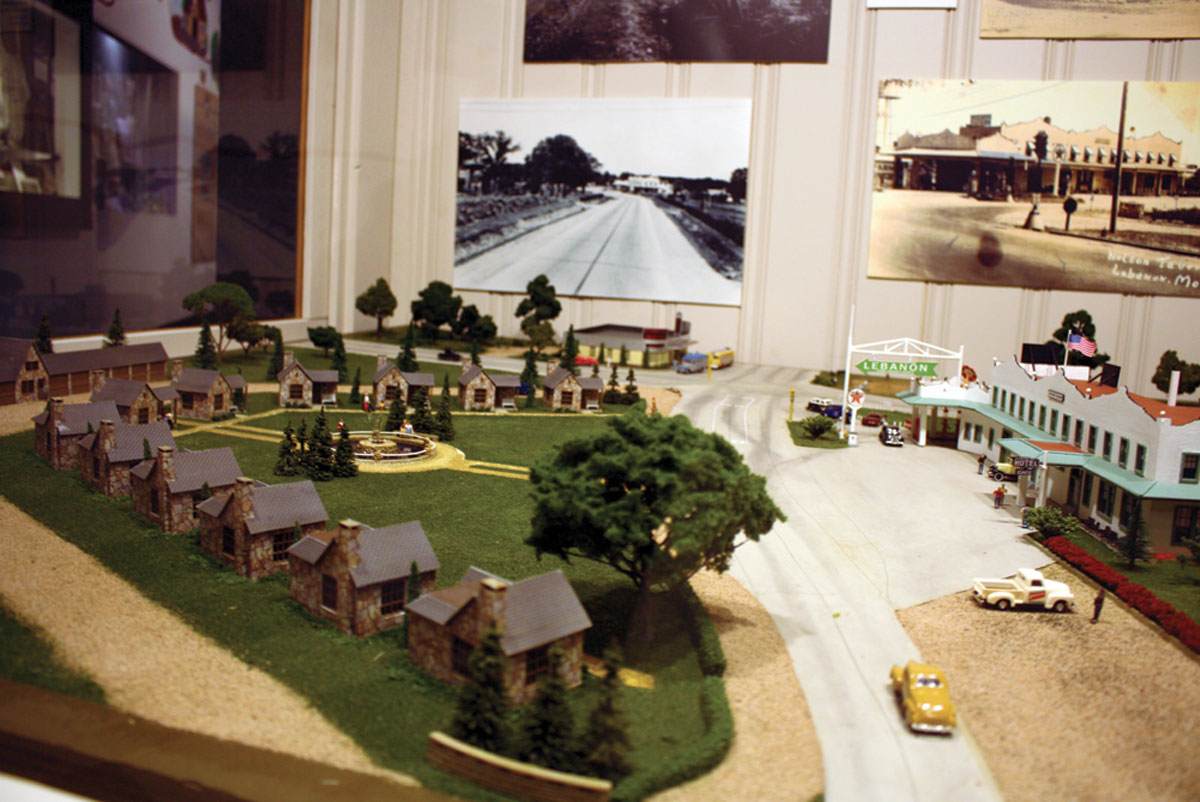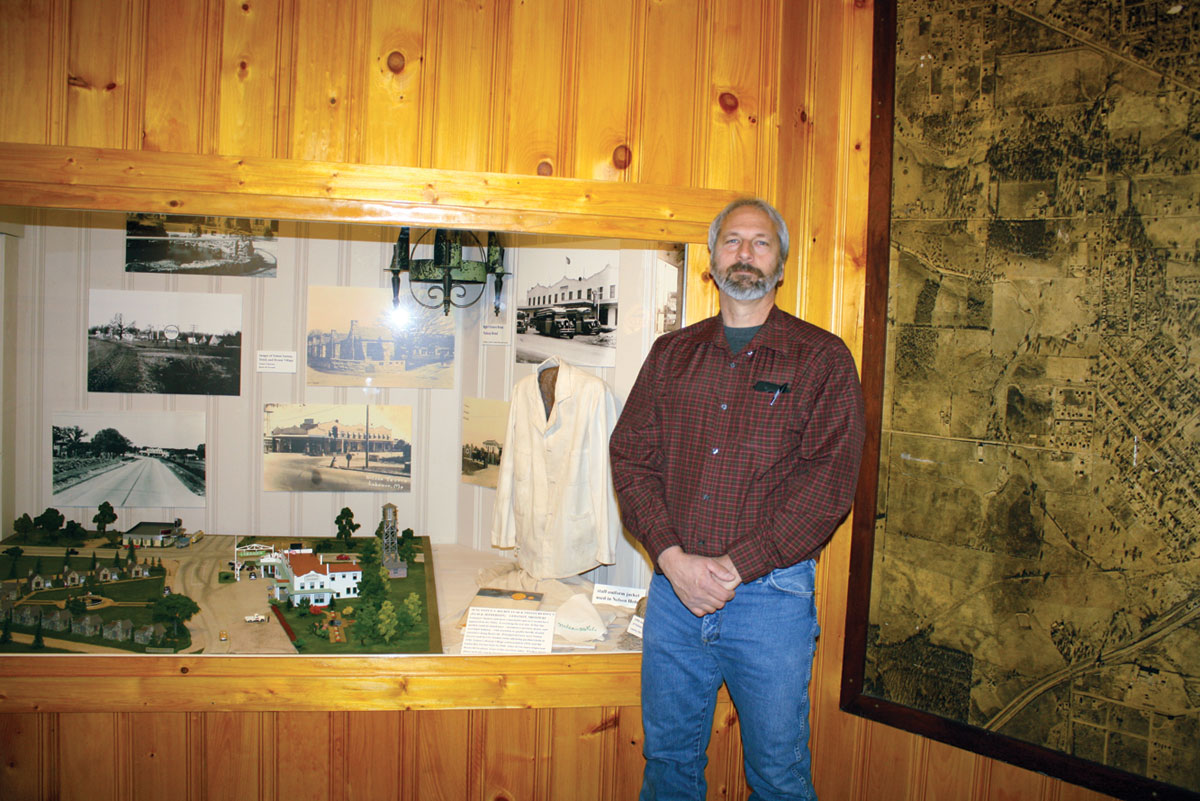
The Route 66 Museum in Lebanon, Mo., steps back in time to share the nostalgia of an era
There’s perhaps no other road in America as famous as Route 66.
The 2,448-mile stretch of highway that begins in Chicago, Ill., and ends on the shores of the Pacific Ocean in Santa Monica, Calif., has been the subject of songs, and the backdrop for movies and television shows.
The Mother Road was officially established in 1926, but was removed from the U.S. Highway System in 1985 after being replaced by the Interstate Highway System. Many of the businesses and communities located along the historic byway were shuttered and forgotten.
Route 66 stretches across the Missouri Ozarks and many of the relics of the highway can still be seen, but many, many more are only memories of an aging generation. Luckily, Route 66 is still a part of the fabric of many communities along the old highway, and those communities continue to welcome travelers from around the world.
Thanks to the efforts of a group of enthusiasts in the Lebanon, Mo., area, Route 66 has a permanent home in the Lebanon-Laclede County Library’s Route 66 Museum.
In 2004, the library purchased a closed K-Mart store and Route 66 Society members Bill Wheeler and Gary Sosniecki, according the museum curator Mark Spangler, had the idea of incorporating a museum into part of the library’s new space and approached the library board. Their suggestion became a reality and the museum was born.
“It was just kind of an off-the-wall idea,” Mark said. “The library never really planned for this. The building is kind of round, which made the corners available for other things and there was nothing in this space. They had the idea, made the suggestion for a museum and here we are.”
The museum houses a variety of Route 66 memorabilia, including a replica of a roadside cabin room from the 1940s, a period service station – complete with a Model A Ford – and a diorama of how the intersection of Route 66 and Missouri 5 once looked.
Many of the items have been loaned or donated to the museum, but others have been acquired, thanks to donations the museum has received through its donation box.
While there is a great deal of variety in the displays in the museum, Mark said they are limited.
“If we pull in local items, we’ll have to go more local, and that’s not a bad thing,” he said. “You want to have some scene of where Route 66 started and where it ended, and the general history, but yet when people show up in a place like this they want as much of the local stuff they can. We had a streetcar in town where the guy sold his specialty – fried rabbit; that’s what people want to see.”
Munger Moss Motel, Camp Joy and the iconic Glenn Wrinkle from Wrink’s Market are among the local displays at the museum, and Mark said there are many items that can be found nowhere else, including a bell boy uniform and an old mop from rescued from the Nelson Tavern and Motel before it was torn down.
“You want to be sure to do justice to our local history,” Mark said, adding that there are many photos yet to be displayed, and larger items still awaiting their debuted. “It’s always evolving and I don’t think it will ever stop.”
While many people think of the catchy phrases such as “Get your kicks on Route 66,” Mark said the Lebanon museum goes much deeper.
“We have a lot of early items here,” he said. “We go back further than the cool cars and the music. We have displays that show the history of the road and the developments America, and that’s the important part; how this all came about and why.”
Mark has created a displays showing the different building materials considered for the construction of Route 66, including wooden bricks, and how families would simply camp out along the road during their travels.
When planning was underway for the construction of Route 66, it was actually local farmers who helped influence its path, and a display honors that history.
“It was an extension of the farm to market idea,” Mark said. “Early highways were actually handled through the Department of Agriculture. The idea of farm to market was basically transferred right to highway development. Because the railroad was still going strong, it was all about getting produce to the railroad, but what they didn’t see was that with just a little improvement that produce truck could hit a good road and go right to the market they were trying to hit. They would actually skip over the railroad, and the railroad didn’t see that coming. The railroad was actually a big supporter of highway development as a way to get crops to the railroad.”
One area Mark hopes to explore in the future is the “Bloody 66” days of the highway.
“There’s a not so nice side of Route 66,” Mark said. “You have gangsters running up and down the countryside; Bonnie and Clyde frequented Route 66 for a time. Just like today, there were people you just didn’t want to run into on the road and there were activities on the route that weren’t all that honest. The moonshine trade ran 66. The moonshiners and their ability to outrun the law actually laid the groundwork for NASCAR. There is also the fatalities that makes it morbidly interesting and we are drawn to these sort of things. The wrecks out there were tremendous, which is why they called it Bloody 66.”
The museum, which charges no admission and is open during library operation hours, welcomes about 1,000 visitors a month from around the world.
“Our numbers are still growing,” Mark said. “It’s not just a local thing here, but it’s just as important to the local people as it is to those people who come here from Europe.”
While showcasing the history of the Mother Road is part of a museum, the Lebanon-Laclede County Library hopes it’s museum offers more.
“It’s the nostalgia, it’s the road-tripping, the good old days,” Mark said. “If things start to drift off into pure history, that’s when you start to loose people a little. They want the nostalgia, and that’s fine; we can be nostalgic about our past. There’s much more than just history in places like this.”
While Route 66 has faded in many of the communities along the way, Lebanon and Laclede County have opted to embrace it.
“We recognize the importance of Route 66, and not every community does that,” Mark said. “The route was important to every community. Another nickname is the Main Street of America. There was something every mile or two for 2,400 miles long Route 66, other than the desert stretch. Route 66 was the opportunity for a community, and back then most of the communities benefited from its presence. Route 66 is still important today. We have an odd mixture on the City Route (the portion of Route 66 that is within the city limits of Lebanon, Mo.); something will get torn down, then something will come back up and it’s still a place to do business.
“It’s unfortunate so many communities have ignored Route 66, and if they continue to ignore it, it will be gone. I think they will eventually regret that.”







